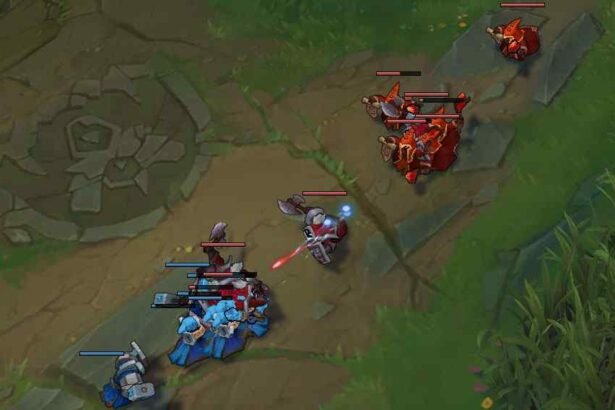In the strategic world of League of Legends, crafting a team with the right mix of AD and AP champions can be the linchpin of success. It’s a chess match against live opponents, where every move and countermove is critical.
A balanced attack keeps adversaries on their toes, struggling to defend against the dual threats. Whether it’s taking down turrets or champions, the power lies in diversity.
Immerse yourself in the ten pivotal reasons that underscore the importance of this mix. Your next match could hinge on this wisdom, and who knows what triumphs await with this knowledge in your grasp?
Key Takeaways
- Having a mix of AD and AP champions creates strategic advantage and challenges opponents’ itemization choices.
- AD and AP champions provide versatility in team fights and objective control by exploiting gaps in enemy champions’ resistance to damage.
- The combination of AD and AP champions offers wave clear options and power in team battles, preventing opponents from building defenses against a single type of damage.
- Champion abilities and siege potential are enhanced with a mix of AD and AP abilities, providing options for execution, utility, and psychological advantage in objective control.
1. Diverse Damage Sources
When you put together your team, ensure you have a variety of AD (Attack Damage) and AP (Ability Power) champions. This strategy prevents the enemy from warding off your attacks with just one kind of defense.
Creating a team with such diversity forces your opponents to spread their investments across different defensive stats, like armor and magic resistance, making their resource allocation less effective.
With a team that’s well-rounded, you’re ready to take advantage of any weaknesses that appear as the game progresses.
Should the opposing team focus their defenses too much on one side, you have the flexibility to adjust your strategy and take advantage of their mistake, keeping a strategic advantage that could secure your win.
2. Itemization Challenges for Opponents

Fielding a team with both AD (Attack Damage) and AP (Ability Power) champions presents a conundrum for the opposing players regarding their defensive gear choices.
If they focus on mitigating one type of damage, they leave themselves open to the other. This situation requires the adversaries to make critical decisions about their item builds.
Should they invest heavily in armor to diminish the incoming AD, the lack of magic resistance will be exploited by AP champions. Conversely, if they prioritize magic resistance, they become vulnerable to physical attacks.
Tactically, your team is setting up a strategic challenge: each opponent is faced with the tough choice of either accepting incomplete protection or managing their resources inefficiently.
This strategy does more than just split their focus before the game begins; it continues to influence their decisions throughout the match as they must keep assessing the changing threats.
Your team thus subtly dictates the direction and focus of the enemy’s itemization, creating an intricate advantage for yourselves.
3. Versatility in Team Fights
Your team’s mix of AD and AP champions provides flexibility during team fights, keeping opponents uncertain and unable to anticipate your strategies.
This combination does more than just complicate their choice of defensive gear; it also allows your team to:
- Take advantage of gaps in the enemy champions’ resistance to damage.
- Choose attack targets based on current vulnerability.
- Sustain offensive power, even when one kind of damage is being effectively countered.
- Expand the range of threats, requiring the opposition to distribute their defensive efforts.
Careful observation of the battlefield highlights the value of a varied offensive approach. Such strategic variety enables your team to adapt as the battle changes, making the most of the ebb and flow of combat and the ever-changing balance of threats and opportunities.
4. Objective Control
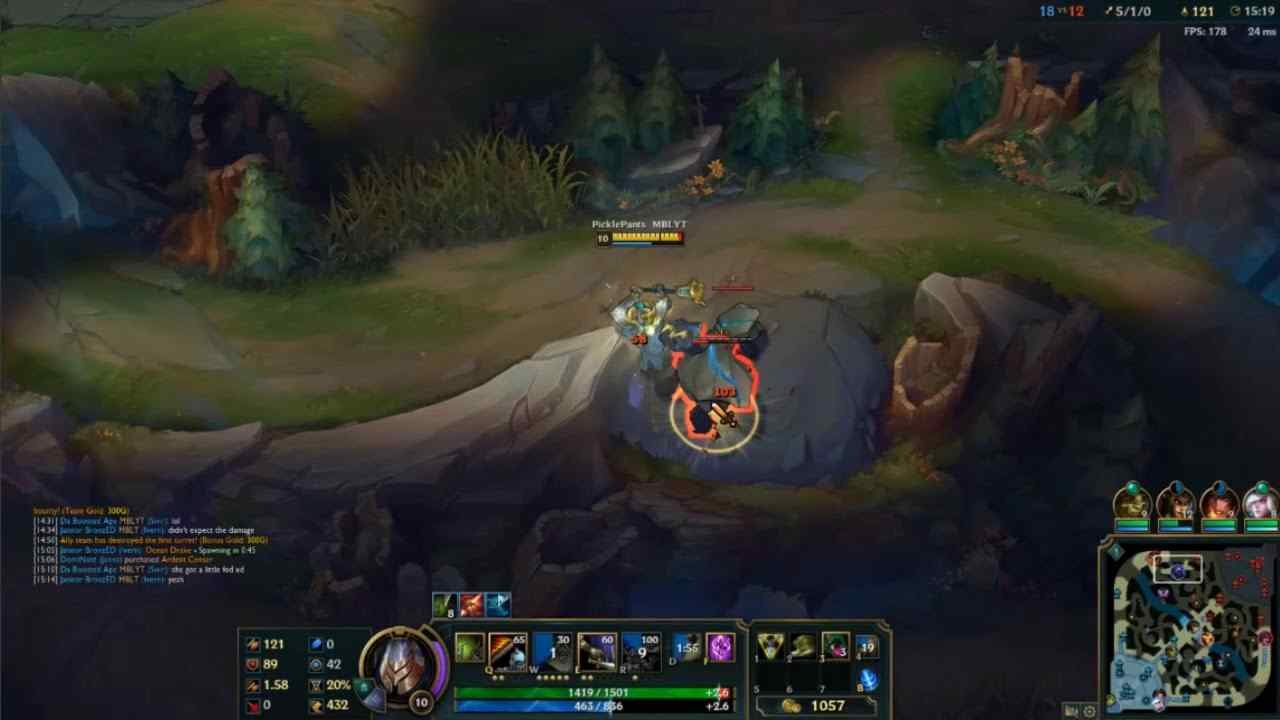
Every champion on your team plays a role in claiming key objectives. Having a mix of AD and AP damage can make sure you’re equipped for every challenge.
When aiming for neutral objectives like Baron or Dragons, a varied damage profile can thwart the opposing team’s attempts to defend by preventing them from effectively gearing up against your assault.
With a heavy AD composition, rivals might stack armor, reducing your team’s offensive impact. A skew towards AP would let enemies concentrate on building magic resistance.
Strategically, a balance of AD and AP can complicate the choices of the opposing team during contests for objectives. They must weigh which threats to neutralize, often leading to a divided focus and misallocation of their defenses.
This variety ensures that your team can adjust strategies in real time and take advantage of emerging vulnerabilities, keeping opponents uncertain and helping you secure these crucial objectives.
5. Wave Clear Options
You’ll often notice that a team with a combination of AD (Attack Damage) and AP (Ability Power) champions can better manage lane pressure and maintain control over the map.
Champions that focus on attack damage are particularly effective in dealing with individual targets, which is vital for eliminating tough minions like cannon and super minions. On the opposite end, champions with ability power typically possess potent area-of-effect skills capable of quickly dealing with groups of minions.
Here are the advantages of having a varied team composition:
- Varied Attack Types: Prevents the opposing team from building defenses against a single type of damage.
- Siege Tactics: Attack damage champions can steadily damage turrets, while ability power champions can control the space, keeping defenders at bay.
- Adaptability in Tactics: Offers the ability to respond to various enemy strategies for clearing waves.
- Balanced Resource Use: Makes sure that champions who use mana for casting spells aren’t the only ones responsible for managing waves.
Approaching your choice of champions with a strategy in mind greatly improves your team’s ability to clear waves effectively.
6. Split Pushing Efficiency
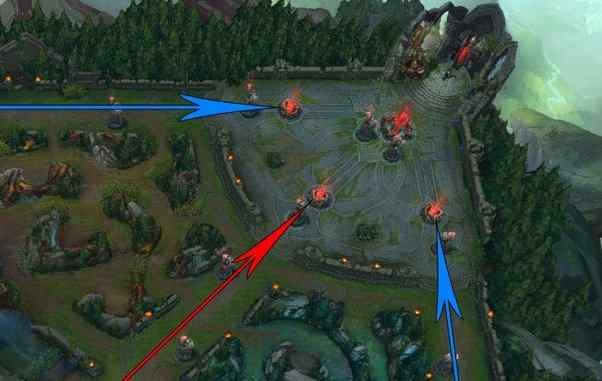
Incorporating both AD and AP champions into your team composition can enhance your split pushing tactics, as each type of champion contributes distinct strengths to the approach.
An AD champion is often skilled at rapidly destroying turrets because of their consistent physical damage. Such champions are also well-suited for one-on-one fights, which are a common occurrence when split pushing.
Conversely, an AP champion can exert pressure through alternative methods. Their high burst damage allows for the swift elimination of minion waves or an unwary defender.
Some AP champions have skills that can either cause significant damage to structures or support their ability to evade enemies who may try to converge on them.
Utilizing a mix of these champions compels adversaries to mount defenses against various kinds of harm, which can often lead to a strategic edge in the game.
7. Threat Diversification
Including a mix of AD (Attack Damage) and AP (Ability Power) champions in your lineup creates a complex threat that opposing teams must prepare for on multiple levels.
This strategic variation compels the opposing team to make difficult choices about their gear and positioning, potentially resulting in errors you can exploit.
Compelling opponents to invest in both armor and magic resistance, weakening their overall defenses.
Making team fight outcomes less predictable with varied damage sources.
Offering flexibility to adapt to changes in the opposing team’s composition and tactical changes.
Presenting chances to take advantage of vulnerabilities in the opposing team’s defense.
Keep these considerations in mind when selecting your team. A balanced combination of AD and AP champions might transform a balanced game into a strategic victory.
8. Late-Game Scaling
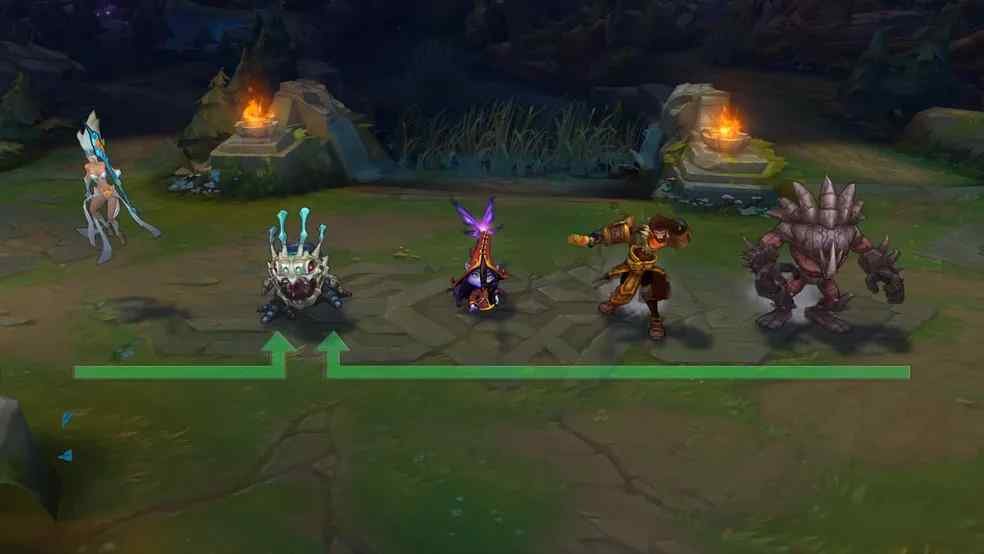
Recognizing that certain champions become stronger as the game reaches its later stages, it’s essential to have a combination of AD and AP damage to remain a threat throughout the match.
Champions who are formidable in the endgame often possess abilities that allow for either significant burst damage or continuous damage.
If your team relies too heavily on a single type of damage, the opposing team’s tanks can gear up to counter it, significantly diminishing your team’s power in climactic team battles.
Mixing AD and AP threats forces the opposing team to face tough decisions about their gear, possibly making them susceptible to a type of damage.
This strategic mix ensures your team can take advantage of your champions’ growth and avert a damage standstill during critical moments.
9. Champion Abilities
Champion abilities provide a variety of options for execution and utility, ensuring unpredictability in your team’s offensive capabilities and making it challenging for opponents to counter. The strategic selection of champion abilities can be pivotal in a battle.
Here are some reasons why the combination of abilities is significant:
- Crowd Control: AP champions often possess potent stuns, slows, or other crowd control methods, which can prepare the way for AD champions to secure eliminations.
- Burst vs. Sustain: AP champions are known for dealing rapid, high-intensity damage, while AD champions are more adept at dealing consistent damage over time, offering a strategic balance.
- Siege Potential: A mix of AP and AD abilities enhances your team’s capability to siege turrets effectively, with certain abilities being better suited for poking at enemies and controlling zones.
- Objective Control: A variety of abilities grants your team the flexibility to secure major objectives like Baron or Dragon, utilizing either high-intensity damage or area control tools.
The appropriate combination of abilities can outsmart and outperform rival teams.
10. Psychological Advantage
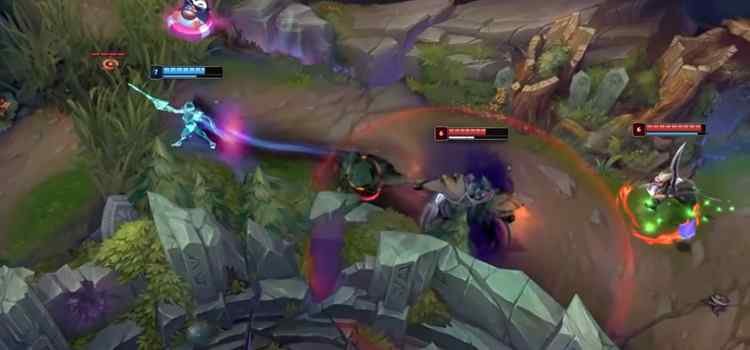
Beyond the strategic benefits of champion abilities, mixing AD and AP champions can also give you a psychological edge over your opponents in-game. An unpredictable composition forces the enemy team to second-guess their builds and strategies.
They’re left wondering if they should invest in armor or magic resistance, creating hesitation and doubt. This mental warfare can lead to overcompensation in one defensive area, leaving them vulnerable to the other type of damage.
Here’s a table that captures the essence of this psychological play:
| Emotion | Enemy’s Action | Your Advantage |
|---|---|---|
| Doubt | Hesitant builds | Exploit weaknesses |
| Fear | Over-defensive play | Create pressure |
| Confusion | Miscommunication | Seize control |
Analyzing these psychological aspects is crucial. By understanding the mental game, you’re not just playing League of Legends; you’re mastering it.
Conclusion
As you embark on the Rift, remember that variety isn’t just the spice of life—it’s the craft of victory. Blending AD and AP champs creates a symphony of destruction that leaves opponents scrambling.
Your team’s adaptability shines, turning every encounter into a chess match where you’re always a move ahead.
Embrace this strategic tapestry, and watch as the enemy’s resolve withers, their spirit eclipsed by the sheer brilliance of your diverse arsenal.
